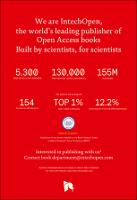Chapter Spinel Ferrite Nanoparticles: Correlation of Structure and Magnetism
Author(s)
Reznickova, Alice
Vejpravova, Jana
Kubickova, Simona
Pacakova, Barbara
Language
EnglishAbstract
Filter bank multi‐carrier (FBMC) modulation, as a potential candidate for physical data communication in the fifth generation (5G) wireless networks, has been widely investigated. This chapter focuses on the spectral efficiency analysis of FBMC‐based cognitive radio (CR) systems, and spectral efficiency comparison is conducted with another three types of multi‐carrier modulations: orthogonal frequency division multiplexing (OFDM), generalized frequency division multiplexing (GFDM), and universal‐filtered multi‐carrier (UFMC). In order to well evaluate and compare the spectral efficiency, we propose two resource allocation (RA) algorithms for single‐cell and two‐cell CR systems, respectively. In the single‐cell system, the RA algorithm is divided into two sequential steps, which incorporate subcarrier assignment and power allocation. In the two‐cell system, a noncooperative game is formulated and the multiple access channel (MAC) technique assists to solve the RA problem. The channel state information (CSI) between CR users and licensed users cannot be precisely known in practice, and thus, an estimated CSI is considered by defining a prescribed outage probability of licensed systems. Numerical results show that FBMC can achieve the highest channel capacity compared with another three waveforms.
Keywords
filter bank multi‐carrier, spectral efficiency, resource allocation, cognitive radio, 5G networksDOI
10.5772/66074Publisher
InTechOpenPublisher website
https://www.intechopen.com/Publication date and place
2017Classification
WAP (wireless) technology


 Download
Download